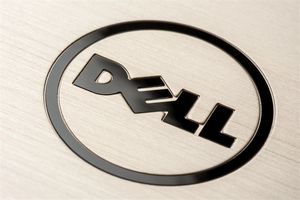
Introduction: The Mathematics of Pipeline Safety
In the pipeline engineering profession, safety and efficiency are not nebulous ideas, they just evolve out of measuring. When it comes to seamless pipes in high-consequence applications, two of the easiest calculations to perform are, determining the minimum required wall thickness at a specific pressure, and testing the Maximum Allowable Operating Pressure (MAOP) for a given pipe.
This guide goes beyond theoretical insights and provides a hands-on and practical reference to these important calculations. We will provide a real-world example, using the fundamental Barlow's Formula, and apply it to show how engineers derive material specifications into safe, reliable pipeline designs.
I. The Foundation: Barlow's Formula and Its Components
Barlow's Formula is the watchword for fundamental pipeline pressure computations. It provides an unambiguous link between pipe dimensions, material strength and pressure containment capability.
The formula is most commonly expressed to solve for pressure:

- P= Internal Pressure (in psi)
- t= Nominal Wall Thickness (in inches)
- D= Outside Diameter (in inches)
- S= Allowable Stress (in psi). This is the critical variable. It is not the full strength of the material but a fraction of it, determined by the material's Specified Minimum Yield Strength (SMYS) and a Design Factor (F).

The Design Factor (F), which is always less than 1.0 and is a defined safety-related multiplier in the regulations (ASME B31.4 or B31.8) is a function of the class location of the pipeline. For example:
- F = 0.72:Class 1 (Rural areas)
- F = 0.60:Class 2 (Towns, industrial areas)
- F = 0.50:Class 3 (Densely populated urban areas)
II. Practical Calculation 1: Determining Minimum Wall Thickness
An engineer's most common task is to calculate the minimum wall thickness required to safely handle a specified operating pressure. To do this, we rearrange Barlow's Formula to solve for t:

Example:An API 5L X52 seamless pipe will be used for a pipeline with a MAOP of 1,480 psi. The pipe has an Outside Diameter of 16 inches and will be installed in a rural, Class 1 location.
Identify the variables:
- P = 1,480 psi
- D = 16 in
- SMYS for X52 = 52,000 psi
- F for Class 1 = 0.72
Calculate Allowable Stress (S):
- S = 52,000 psi * 0.72 = 37,440 psi
Calculate Minimum Wall Thickness (t):

Therefore, the minimum required wall thickness for this pipe is 0.316 inches. The engineer would then select the next standard available wall thickness (e.g., 0.375 inches).
III. Practical Calculation 2: Verifying MAOP
Reverse calculation is used to determine safe maximum operating pressure for piping (a pipe with a known wall thinness). This is always done when verifying the capacity of existing infrastructure.
Example:You currently have an API 5L X65 seamless pipe with an Outside Diameter of 20 inches, with a nominal wall thickness of 0.500 inches. The pipeline is located in a Class 2 location.
Identify the variables:
- t = 0.500 in
- D = 20 in
- SMYS for X65 = 65,000 psi
- F for Class 2 = 0.60
Calculate Allowable Stress (S):
- S = 65,000 psi * 0.60 = 39,000 psi
Calculate MAOP (P):

IV. A Critical Addition: Corrosion Allowance
The calculations above have now given the structural minimum wall thickness. The structural minimum wall thickness is not sufficient for long-term integrity of the pipeline. Engineers also need to provide a corrosion allowance. The corrosion allowance is a layer of thickness on top of the design wall thickness to take into consideration the amount of metal loss due to corrosion over its design life.
If the calculated structural thickness (t) is 0.316 inches and the project specifies a corrosion allowance of 0.0625 inches (1/16"), the required final wall thickness would be:

The engineer would then specify a pipe with a nominal wall thickness of 0.375 inches or greater, ensuring it meets the requirement after accounting for standard manufacturing tolerances.
Conclusion
Calculating wall thickness and MAOP is a basic skill in pipeline engineering. Using Barlow's Formula and accounting for significant variables such as material strength (SMYS), Design Factors driven by safety, and consideration for long-term Corrosion Allowance, all enable an engineer to bring an abstract standard into a physical, safe, and efficient design. This highly quantitative approach is what provides the assurance that seamless pipe can be utilized in the most demanding energy applications in the world.
Copyright Notice
This article was originally created by CORTEC STEEL LIMITED and first published on the official website www.cortecsteel.com.
Reproduction Notice
Unauthorized reproduction is strictly prohibited. For citation or reproduction, please credit the source and include a link to this article. All rights reserved.
Media Contact
Company Name: CORTEC STEEL LIMITED
Email: Send Email
Country: China
Website: https://www.cortecsteel.com/






